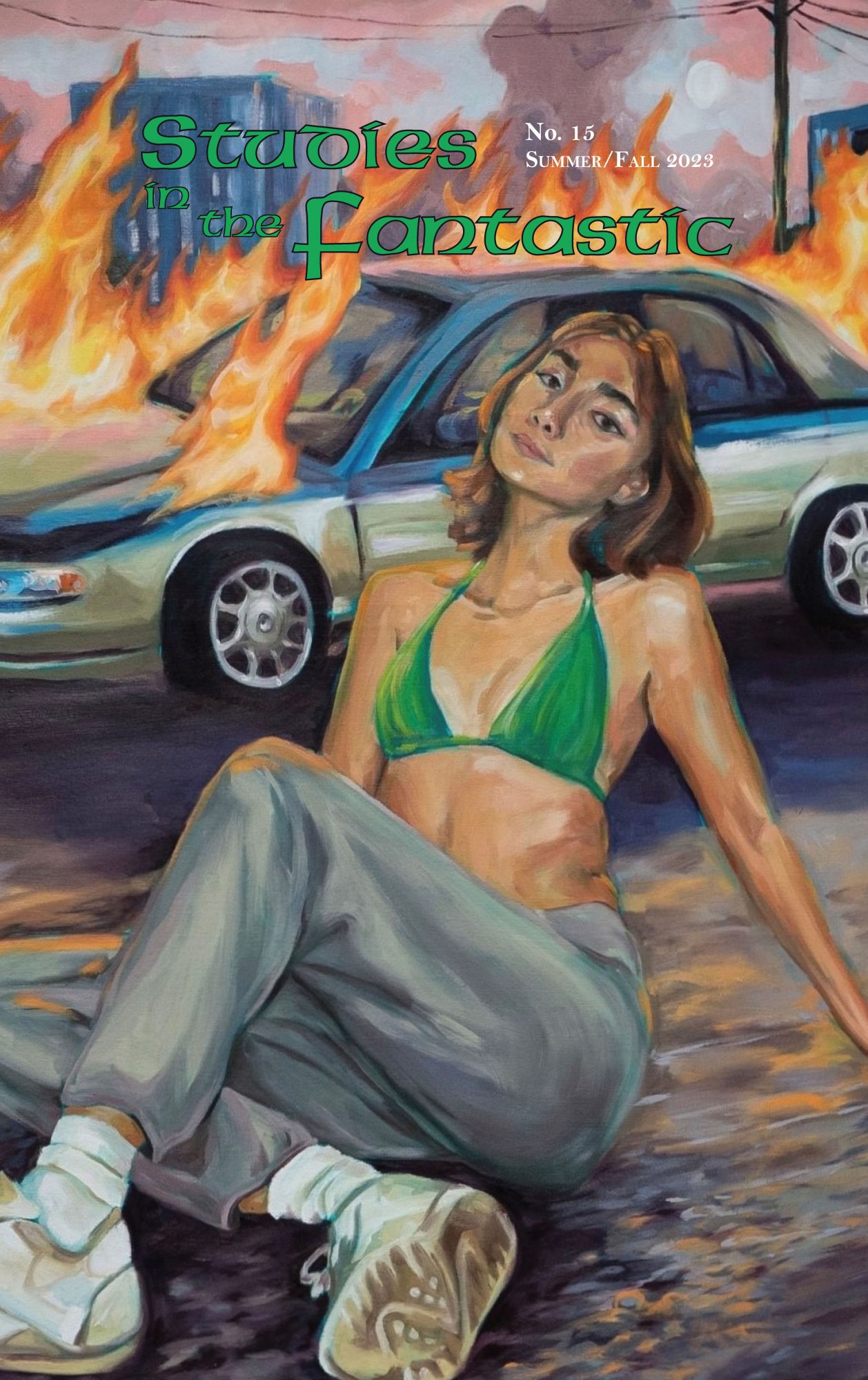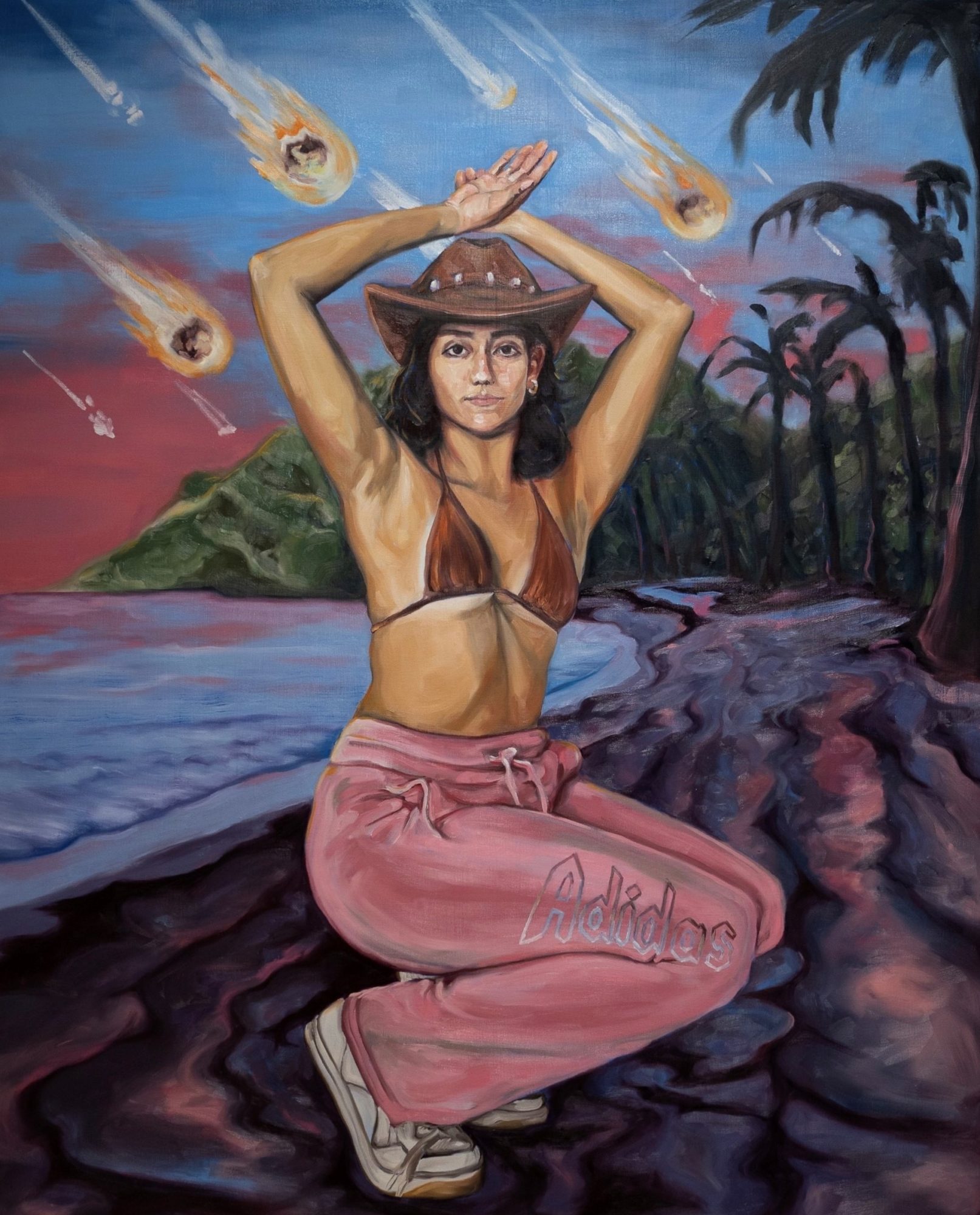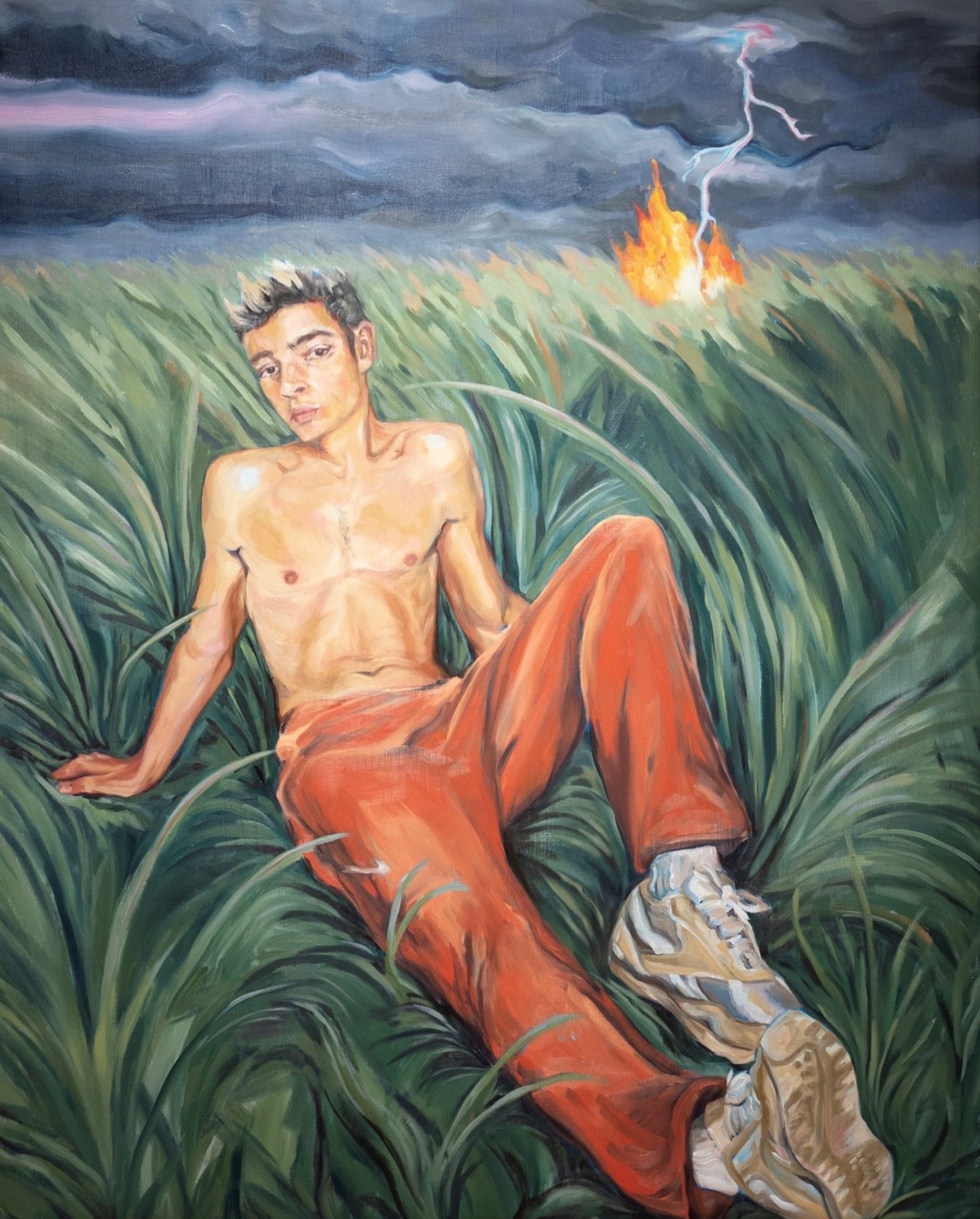As we get ready to send Issue 15 of Studies in the Fantastic off to print, I wanted to take a moment to contextualize our cover art. The artist, Chloe St. Aubin, is a recent graduate of the University of Tampa, and the image that is featured on the cover is a detail from her BFA graduate showcase in 2022. It’s unusual for us to put student work on the cover, but the three images that comprise this triptych seemed to be telling a story. It’s a narrative that feels especially pertinent to Gen Z, and I read in these paintings a similar “vibe” (as my students would say) to the ironic lament of the film Bodies Bodies Bodies (dir. Halina Reijn, 2022), of which we are proud to include a review essay by Eilidh Harrower in this issue.

Our cover design (layout by recent UT graduate Madeleine Eisele, of a detail from the larger painting by St. Aubin) shows a young woman in a bra or bikini top who poses in the foreground of an urban landscape. Behind her is a car on fire, suggestive of many scenes of televised riots. In another painting in the series, a woman poses on a beach; behind her a cluster of meteors barrel towards the tropical setting. In the third, a young man poses shirtless in a field of tall (dry?) grass, as a lightning strike ignites a fire in the distance. In all three, the bodies are seductive, semi-nude, and the figures meet the eye of the viewer. They seem blithely unaware of the wreckage and impending doom that surrounds them.

With their bright color palettes and the display of the human body that invites the spectators’ gaze, these images seemingly mirror one aspect of our society—of self-interest pursued to the detriment of the world. But I want to be clear that I don’t think St. Aubin’s work is a portrait of Gen Z, so much as it is a caricature of how others see Gen Z, as not merely myopic but narcissistic, taking selfies at the end of the world. Instead, the series is more aptly a complex portrait of the way dominant powers, like major multinational corporations, seek to distract from pressing concerns—including the destruction of the natural environment (wildfires); income inequality, which leads inevitably to social unrest (cars on fire)—and to capitalize upon unavoidable tragedy as in the 24-hour news cycle (meteors), with increased commoditization. These images neatly suggest a catalogue or series of magazine ads (perhaps for sweatpants, as all three persons are wearing them) as if to illustrate how we are being sold useless goods, even as the ship goes down, a ship that in large part was wrecked on the rocks of greed, self-interest, and fear of others.

The reality that I see in my classes as I interact with young members of Gen Z, is more hopeful. The work of the fantastic and scholarship about it continues to be motivated by a desire to, like these paintings, sound an alarm bell, calling for us to work together to care for the environment, strive for social justice, and seek meaningful changes in our reality, even as it grows more and more dystopian.

What readers of Studies in the Fantastic can look forward to alongside our traditional, peer-reviewed scholarly essays are more review essays like Harrower’s, more author interviews, more retro-reviews revisiting underappreciated or forgotten works, as well as dialogic reviews where two scholars have a conversation about a single text; these will be published online in a forthcoming web series prior to publication in print. It is our view that the work of the fantastic is more urgent than ever before, and we hope to reach a wider audience with some of these changes.
If you would like to submit cover art, a review pitch, or a scholarly essay, please see our guidelines on our website and send questions and queries to fantastic@ut.edu.
Studies in the Fantastic No. 15 is available for preorder now.